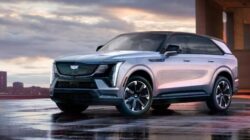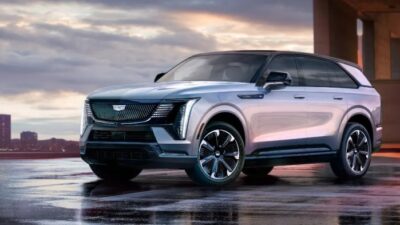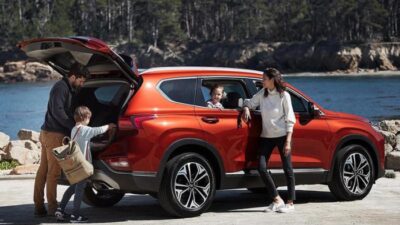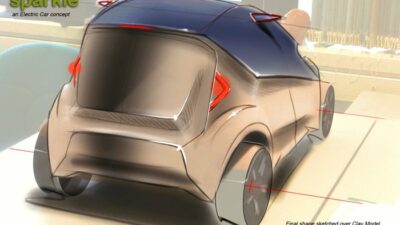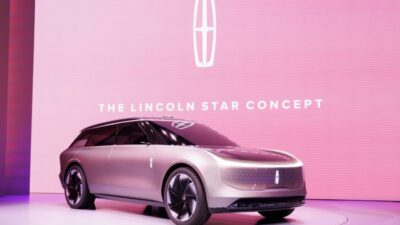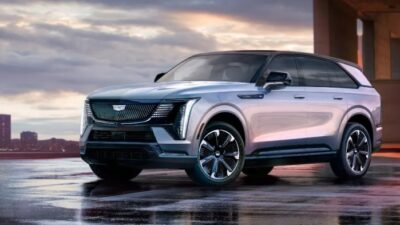Kicking off with Affordable Family Cars 2025, this opening paragraph is designed to captivate and engage the readers, setting the tone for what’s to come. As we delve into the world of family vehicles, exploring trends and advancements, get ready to envision the future of affordable transportation for families.
Affordable Family Cars in 2025

When it comes to affordable family cars in 2025, the automotive industry is witnessing a shift towards more budget-friendly options that cater to the needs of families without compromising on quality and safety.
Current Landscape of Affordable Family Cars
In recent years, car manufacturers have been focusing on producing affordable family cars that offer a combination of space, comfort, and safety features at a competitive price point. Models like the Toyota Corolla, Honda Civic, and Hyundai Elantra have been popular choices for families looking for reliable and economical vehicles.
Trends Shaping the Future of Family Cars
- Electric and hybrid options: With the growing emphasis on sustainability and environmental consciousness, more affordable electric and hybrid family cars are expected to hit the market in 2025.
- Advanced safety features: Car manufacturers are integrating advanced safety technologies such as automatic emergency braking, lane-keeping assist, and adaptive cruise control in affordable family cars to enhance overall safety for passengers.
- Smart connectivity: In 2025, affordable family cars are likely to be equipped with advanced infotainment systems, smartphone integration, and connectivity features to enhance the overall driving experience for families.
Importance of Affordability in Family Vehicles
Affordability plays a crucial role in the context of family vehicles as it allows families to own a reliable and safe mode of transportation without breaking the bank. Affordable family cars ensure that families can meet their day-to-day transportation needs without compromising on quality, safety, and comfort.
Electric and Hybrid Options

Electric and hybrid family cars are becoming increasingly popular choices for families looking for more sustainable and cost-effective transportation options. These vehicles offer a range of benefits, including lower fuel costs, reduced emissions, and the potential for government incentives. In this section, we will explore the rise of electric and hybrid family cars, compare the cost of ownership of electric/hybrid cars versus traditional ones, and discuss the environmental impact of these vehicles.
Cost of Ownership Comparison
When it comes to the cost of ownership, electric and hybrid cars can be more expensive upfront than traditional gasoline-powered vehicles. However, they often offer lower maintenance and fuel costs over time, making them a more economical choice in the long run. Additionally, many governments offer incentives such as tax credits or rebates for purchasing electric or hybrid vehicles, further reducing the overall cost of ownership.
Environmental Impact
Electric and hybrid family cars have a significantly lower environmental impact compared to traditional gasoline-powered vehicles. These vehicles produce fewer emissions, helping to reduce air pollution and combat climate change. By switching to electric or hybrid cars, families can contribute to a cleaner and more sustainable future for the planet.
Advanced Safety Features

In the evolving landscape of affordable family cars in 2025, advanced safety features play a crucial role in ensuring the well-being of passengers and reducing the risk of accidents. These features not only provide peace of mind to families but also contribute to the overall affordability of the vehicles by potentially lowering insurance premiums and minimizing repair costs.
Collision Avoidance Systems
Collision avoidance systems, such as automatic emergency braking (AEB) and lane-keeping assist, are becoming standard in many affordable family cars by 2025. These systems use sensors and cameras to detect potential collisions and assist the driver in avoiding accidents. By reducing the likelihood of crashes, these features can lead to lower insurance premiums for families, making the vehicles more cost-effective in the long run.
Adaptive Cruise Control
Adaptive cruise control is another safety feature that is increasingly being integrated into affordable family cars. This system maintains a safe distance from the vehicle in front by automatically adjusting the speed of the car. By promoting safer driving habits and reducing the risk of rear-end collisions, adaptive cruise control contributes to overall affordability by potentially preventing costly repairs and medical expenses associated with accidents.
Blind Spot Monitoring
Blind spot monitoring systems use sensors to alert drivers of vehicles in their blind spots, reducing the likelihood of accidents during lane changes. As this feature becomes more common in affordable family cars, it enhances overall safety and helps families avoid costly collisions and repairs.
Technological Advancements in Vehicle Safety
Technological advancements, such as artificial intelligence and machine learning, are revolutionizing safety in family vehicles. These advancements enable cars to process and respond to information faster and more accurately, leading to improved safety outcomes for passengers. By leveraging cutting-edge technology, affordable family cars in 2025 can offer advanced safety features that were once exclusive to luxury vehicles, making them more accessible and cost-effective for families.
Connectivity and Infotainment: Affordable Family Cars 2025

In the modern era, connectivity and infotainment systems play a crucial role in enhancing the overall driving experience for families. These features not only provide entertainment but also contribute to convenience and safety on the road.
Advancements in Connectivity Features
Connectivity features in family cars of 2025 are expected to offer seamless integration with smartphones and other devices. This includes advanced Bluetooth capabilities, wireless charging pads, and improved voice recognition systems. With the rise of 5G technology, families can expect faster and more reliable connectivity for streaming music, navigation, and hands-free calling.
Role of Infotainment Systems
Infotainment systems have become the central hub for controlling various aspects of the car, from climate settings to navigation. In 2025, these systems are anticipated to be more intuitive and user-friendly, with larger touchscreens and customizable interfaces. Families can enjoy features like Apple CarPlay, Android Auto, and in-car Wi-Fi for entertainment on long road trips.
Impact on Affordability and Convenience
While advanced connectivity and infotainment features may add to the overall cost of a family car, they also provide significant value in terms of convenience and safety. With hands-free calling and voice-activated controls, drivers can stay focused on the road while accessing important information. Additionally, features like real-time traffic updates and remote vehicle monitoring contribute to a smoother and more enjoyable driving experience for families.
Space and Comfort
When it comes to family cars, space and comfort are crucial factors that can greatly impact the overall driving experience for families. The interior of a family car needs to be designed in a way that maximizes space for passengers and cargo, while also providing a comfortable environment for long journeys.
Maximizing Space in Affordable Family Vehicles
One innovative design solution that helps maximize space in affordable family vehicles is the use of versatile seating arrangements. By incorporating seats that can be easily folded or adjusted, manufacturers can create a flexible interior layout that meets the varying needs of families. Additionally, clever storage solutions such as under-seat compartments and hidden storage bins can help optimize the available space inside the car.
Balance Between Affordability and Comfort
Finding the balance between affordability and comfort in family car interiors is a delicate task for automakers. Cost-effective materials that are durable and easy to clean are often used to maintain affordability without compromising on comfort. Moreover, ergonomic seat designs and adjustable features like lumbar support and climate control contribute to a more comfortable driving experience for passengers without inflating the price tag.
Maintenance and Repair Costs

When considering affordable family cars in 2025, one crucial aspect to analyze is the projected maintenance and repair costs. These ongoing expenses can greatly impact the overall affordability and long-term ownership experience of a vehicle.
Projected Cost Analysis, Affordable Family Cars 2025
As technology continues to advance in the automotive industry, maintenance and repair costs for cars are expected to evolve as well. By 2025, it is projected that the overall maintenance costs for affordable family cars will be influenced by factors such as the complexity of electric and hybrid systems, advanced safety features, and connectivity technology.
- With the integration of electric and hybrid options in more affordable family cars, the maintenance costs related to traditional internal combustion engines may decrease. Electric vehicles typically have fewer moving parts, reducing the need for regular maintenance such as oil changes and engine tune-ups.
- However, the specialized components of electric and hybrid systems may require trained technicians and specialized tools for repairs, potentially leading to higher maintenance costs in certain areas.
Strategies to Reduce Costs
Despite the evolving landscape of maintenance and repair costs, there are strategies that car owners can implement to reduce these expenses without compromising quality.
- Regular maintenance schedules: Adhering to the manufacturer’s recommended maintenance schedule can help prevent costly repairs by addressing issues early on.
- DIY maintenance: Simple tasks like changing air filters or checking fluid levels can be done at home, saving on labor costs.
- Extended warranties: Investing in extended warranties or service plans can provide peace of mind and financial protection against unexpected repair expenses.
Impact of Technological Advancements
Technological advancements in automotive engineering are playing a significant role in shaping maintenance requirements for affordable family cars in 2025.
- Diagnostic tools: Advanced diagnostic systems can quickly identify issues, reducing diagnostic time and labor costs.
- Predictive maintenance: AI-powered systems can anticipate maintenance needs based on vehicle data, enabling proactive maintenance to prevent breakdowns.
- Remote diagnostics: Remote monitoring capabilities allow technicians to assess vehicle health without the need for physical inspections, streamlining the maintenance process.
In conclusion, Affordable Family Cars 2025 offer a glimpse into a future where safety, technology, and comfort converge to create budget-friendly options for families. As we look ahead, the landscape of family vehicles is set to evolve, providing exciting possibilities for consumers seeking reliable and affordable transportation.







